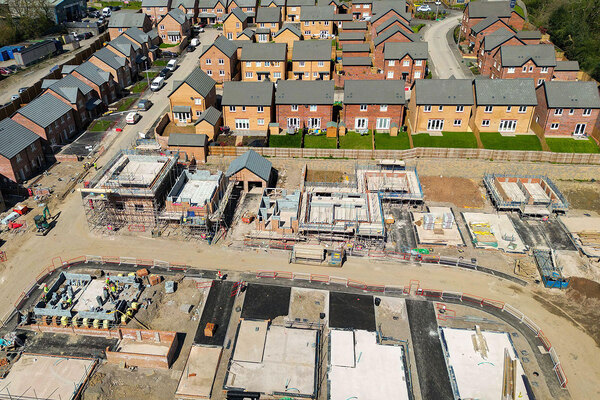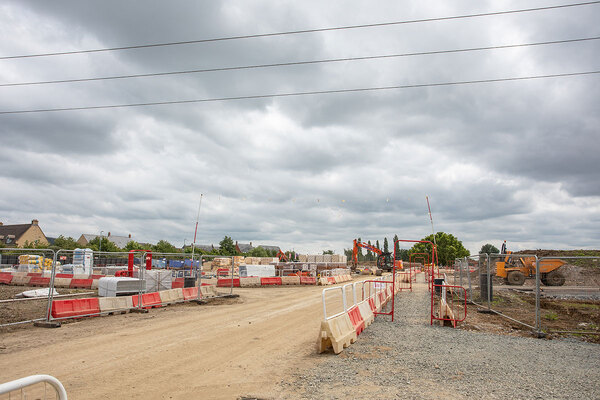A new public-private financial model is needed to kick-start social housing development
The government needs to think bigger about the investment needed to achieve its housing goals, writes Jon Coane, partner and head of funding at Anthony Collins Solicitors
If the new government’s speed out of the blocks is anything to go by, they mean business when it comes to tackling the shortage of affordable and social housing and kick-starting development.
But changing planning and land development policies isn’t enough on its own, and more rounded thinking about financial models that will work for local authorities, lenders, private investors and registered providers is urgently needed.
At a time when registered providers are coming under intense regulatory pressure to improve the quality of their housing stock and become better at dealing with consumer complaints, the cost of maintenance, repair and improvement programmes is going through the roof, and many are struggling to balance the books.
Despite the many challenges facing the social housing sector, a lack of readily available private sector investment isn’t one of them.
Banks, as well as pension and insurance companies, are cash-ready to invest in building projects and support housing associations in meeting their increasing housing targets. Key for Matthew Pennycook, the new housing minister, will be finding a way to harness this liquidity to boost housing provision at a local level while delivering the certainty and security that investors expect in return.
The private finance initiative (PFI), which was launched in 1992 and resurrected in 2012, had many shortcomings and ultimately proved unfit for purpose, but could there now be scope for a public-private finance (PPF) initiative mark three?
“Having discovered a ‘black hole’ in the public finances, it is already clear that the new government won’t be able to afford to achieve its goal of developing 1.5 million new homes in five years without significant private sector involvement”
Having discovered a “black hole” in the public finances, it is already clear that the new government won’t be able to afford to achieve its goal of developing 1.5 million new homes in five years without significant private sector involvement. To deliver on its pre-election pledge, investors must be encouraged to step forward to fund the development of more housing, with the promise of fiscal incentives and support.
But what could a new PPF3 look like? The original PFI scheme was led by the public sector acting as contracting authorities. However, today, many public sector bodies lack the procurement and project management expertise to run such initiatives, and they can’t afford to recruit skilled people or hire consultants.
One possible solution could be to run PPF3 through the combined authorities, as they have access to relevant skills or know-how to develop them.
The combined authority would procure a special purpose vehicle backed by stakeholders (which could include local authorities and housing associations), where each new place-based housing project would be funded through a mix of subordinated debt, equity, bank/investor loans and government support.
Schemes should be structured to allow all the relevant stakeholders to hopefully profit from their PPF3 investment by owning a stake in these housing projects, which could also be managed by housing associations, and consist of a mix of affordable, shared ownership and market sale properties, as well as build-to-rent properties.
Of course, lessons from past PFI failings would have to be addressed at the outset. PFI contracts were long-term agreements that could last for 25 years. This wasn’t a problem when the economy was performing strongly and public sector budgets were healthy, but when the economic going got tough, many PFI contracts were cut short. Terminating the contracts and their associated finance proved costly for both the public sector and the taxpayer.
“Alternatively, it might be possible to leverage public sector pension schemes to support housing projects in the local area. This initiative could be incentivised by tax breaks, and stakeholders’ interests could be protected by a government-backed guarantee or other contingent liability”
Subject to ensuring it is attractive to sufficient investors, funds and banks, perhaps the length of these contracts should be shorter, and they should be more flexible. There were also issues with the way PFI contracts were structured, which made them very expensive to vary and costly to deliver. These issues would need to be addressed.
Solving these problems and putting in place a new PPF3 framework that works would take time, but it could be worth the wait. In the meantime, the government could press ahead with tactical changes to drive investment in social and affordable housing in the near term. A new, centrally funded, grant-based scheme could be established to facilitate development activity led by local and combined authorities collaborating with registered providers that can also manage the properties once built.
Alternatively, it might be possible to leverage public sector pension schemes to support housing projects (which would include social and affordable housing) in the local area. This initiative could be incentivised by tax breaks, and stakeholders’ interests could be protected by a government-backed guarantee or other contingent liability.
With the housing shortfall widening and little money in the coffers to fund more housing development, the government knows that it needs to act quickly. This can only be achieved by bringing all stakeholders – local authorities, lenders, private investors and registered providers – together and collaborating to map out a housing strategy to meet the needs of society in the short and long term.
Jon Coane, partner and head of funding, Anthony Collins Solicitors
Sign up for our development and finance newsletter
Already have an account? Click here to manage your newsletters













